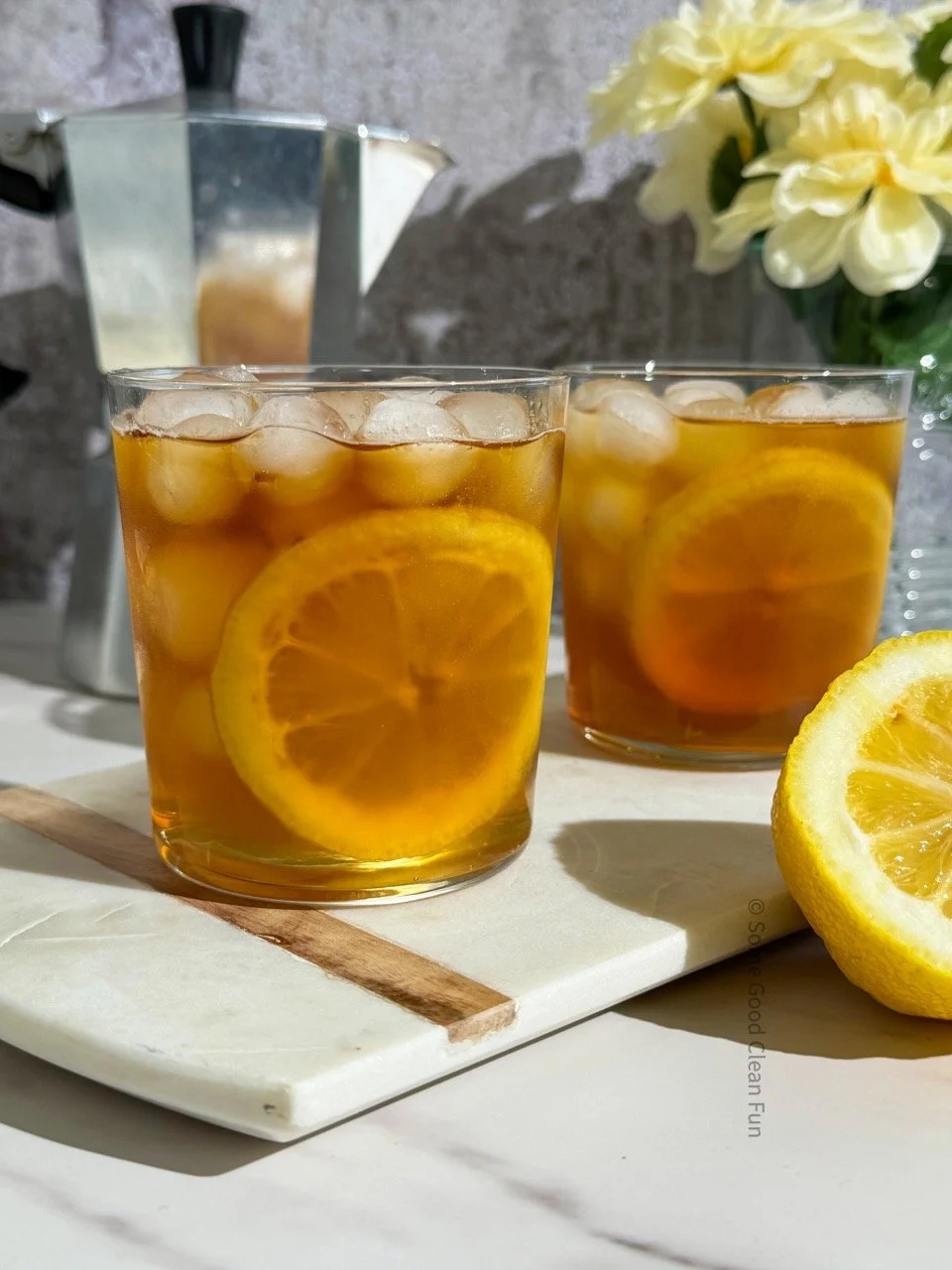LimonZERO Espresso Spritz
/Did you know there’s a non-alcoholic limoncello? Neither did we! Typically, we love the flavour of lemons and it’s a perfect way to add the fresh feeling of spring and summer into your drinks. Prior to discovering Pallini’s Limonzero, incorporating similar bright and sweet lemon notes into a mocktail was a long-process, so it’s exciting to be able to have this bottle on hand. It’s now on rotation on our mocktail bar. But first, what is limoncello and what can you use to replace it in your mocktails?
What is limoncello
Limoncello is a vibrant, lemon-flavored liqueur that hails from Italy, known for its bright yellow hue and refreshing citrus taste. It is considered a digestif, so typically enjoyed after meals, and is a beloved staple in Italian culture. It boasts a strong, sweet, and tangy flavor profile that perfectly encapsulates the essence of ripe lemons. It usually has a high ABV.
The process of making limoncello requires just a few key ingredients: lemons, alcohol, water, and sugar. Lemons from from the Amalfi Coast or Sorrento are preferred as they are known for their thick, aromatic peels. These peels are stripped from the lemons, ensuring minimal white pith, which can impart a bitter taste. The lemon peels are then steeped in high-proof alcohol, such as vodka or grain alcohol, for several days to several weeks. This infusion period allows the essential oils and flavors to be extracted from the peels. Once the alcohol has absorbed the lemon essence, it is combined with a simple syrup made from water and sugar. The mixture is then left to rest, allowing the flavors to meld and mature. The result is a smooth, fragrant liqueur with a bright yellow color and a refreshing lemon taste.
Making oleo Saccharum as a non-alcoholic limoncello substitute
Making oleo saccharum at home is one of the only ways to replicate the deep, warm but bitter lemon flavours you might have loved in limoncello. It’s a labour of love though and requires planning and patience. For anyone interested in making it, here are some brief instructions:
Remove the peels from a 4-5 lemons, being careful not to include the white pith.
Add the peels into a mason jar with 1 cup of granulated sugar, and muddle hard with a wooden spoon or muddler, to get the oils out of the skins.
Cover the jar and let it sit in a cool, dark place for 48 hours until all the sugar is dissolved into the citrus oils.
Strain with a cheesecloth, pressing down on th skins to get all the syrup out.
It won’t taste like limoncello exactly, as it’s missing the sharp bite of the alcohol, but you can add apple cider vinegar to your mocktail to enhance the oleo saccharum and balance out the sweetness.
What is non-alcoholic limoncello?
Pallini is one of Rome’s oldest and renowned creators of limoncello. Limonzero is made with the same care as Pallini's alcoholic limoncello, using renowned Sfusato lemons from the Amalfi Coast. This delicious type of lemon is also referred to as “Limone pane” (“bread lemon”) due to its edible peel. It’s the only lemon you can bite, rich in vitamin C and refreshing essential oils, known for its low acidity and sweet taste.
Pallini Limonzero is the world’s first non-alcoholic limoncello. The recipe was created during the toughest days of the Covid-19 lockdown in Italy and became one of the projects that helped the Pallini team stay positive during difficult days. Pallini set out to create an equally festive healthier alternative during a time when many turned to alcohol. This is one of the many many reasons we love this product so much!
In 2022, Pallini Limonzero was awarded the highest Master award by the Global Spirits Masters competition, noting it “resembles limoncello greatly” and in 2023, the Ultimate Spirits Challenge awarded the Limonzero a 92-point score and the "Best Buy" medal.
One downside to either regular limoncello or non-alcoholic limonzero is they are sugar bombs! But worth it for that lemony zing you’re craving.
So, what can you make with non-alcoholic limoncello?
One of the easiest drinks to make with limonzero is a 1:1:1 ratio of limonzero, non-alcoholic white wine and seltzer. It’s light, refreshing and really elevates the lemon flavour without too much sweetness or adding too much extra sugar - low-sugar non-alcoholic sauvignon blanc is best. You can use non-alcoholic sparkling wine as well (Freixenet is one that we’re loving to pair with LimonZero right now!).
Another easy recipe is to add it to a classic espresso tonic. Here’s the recipe!
Non-alcoholic Limoncello Espresso Spritz Recipe
We can’t get Sabrina Carpenter’s new song Espresso out of our heads, so it’s only fitting we make a mocktail that matches this vibe. If you’ve never had an espresso and tonic before, you’re missing out. They are on heavy rotation over here once the weather gets warm. This mocktail adds a hit of lemon to really make it special!
Ingredients
2 oz Pallini LimonZero
2 oz good quality espresso, cooled slightly
3-4 oz tonic water
fancy ice
lemon slices for garnish
Preparation
1. Add Limonzero and tonic water to a glass with ice
2. Stir to combine.
3. Pour cooled espresso over top of the liquid.
4. Garnish with lemon slices.
Cheers and here’s to warm patios and sunny afternoons! Let me know in the comments if you’ve tried this and what you think!

Non-alcoholic Limoncello Espresso Spritz
Ingredients
- 2 oz Pallini LimonZero
- 2 oz good quality espresso, cooled slightly
- 3-4 oz tonic water
- fancy ice
- lemon slices for garnish
Instructions
- 1. Add Limonzero and tonic water to a glass with ice
- 2. Stir to combine.
- 3. Pour cooled espresso over top of the liquid.
- 4. Garnish with lemon slices.





